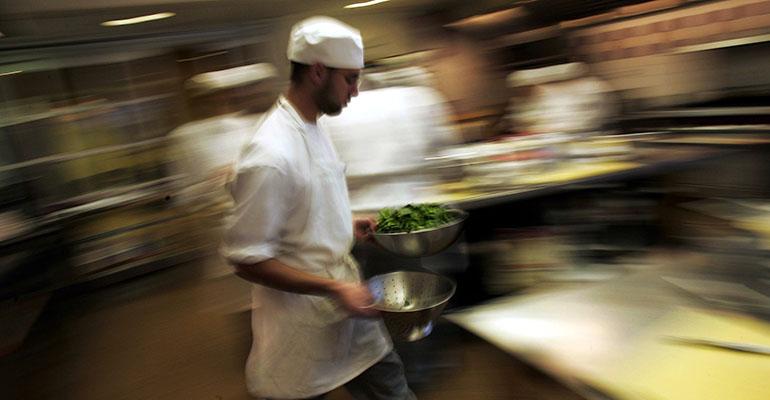Many restaurant owners think the solution to rising minimum wages is to cut labor. Apples to apples, right? Wrong! There are not enough labor controls any restaurant owner can put in place to limit the impact of increasing minimum wages on the business. The solution must reflect all aspects of the business.
In short, you need to understand, calculate and then attack your prime cost.
What is prime cost? The total of cost of goods sold, which includes food, beverage, draft beer, bottle beer, wine and liquor costs, plus your total labor cost, to include taxes, benefits and insurance. For old timers like me, this used to be referred to as controllable expenses. I break it down into food, beverage and labor costs.
I have observed that most independent restaurant owners are running at least 10 points above a healthy prime cost. In most cases, if changes aren't made, restaurant owners are going to be taking profits right out of their own pockets to meet the minimum wage hikes, or they’re going to be closing their doors.
This is where I lose most restaurant owners: When I say, “It's going to take work. You have to overhaul your business.”
No one will admit they would rather lose their restaurant than put in the work necessary to keep it running profitably, but I meet them every day. I get it. It's hard. Getting your management team on board is hard. But wouldn’t you rather make changes to your operation than give away your profits, or worse, have to close your restaurant?
If you answer yes to the last question, the next step is to figure out your current prime cost and identify how many points you need to cut to hit a target that is right for your style of restaurant.
To figure out your prime cost, start with a budget template for the next 12 months of operation. Although budget is a dreaded word, the budgeting process is really quite simple:
1. Start by gathering some important information such as gross sales, cost of goods sold (COGS), labor by position and all operating expenses for the past 12 months.
2. Next, determine if you are expecting sales to rise, fall or remain steady for the next 12 months.
3. Split your gross sales up by sales category and determine what your COGS percentage is by sales category. Split labor up by position: labor cost percentage for hourly employees and dollar amount for salaried positions.
4. When you build your budget template, for all variable line items multiply sales by the percentage; for fixed expenses, divide the yearly total by 12 to yield monthly fixed costs.
Once your budget template is finished, and you identify your prime cost, what should it be? The industry benchmark for restaurant prime cost has been an average 65 percent for a full-service restaurant and 60 percent for a quick-service restaurant. However, our margins have been shrinking with higher food costs and increased administrative costs, such as health care and insurance. Plus, I have never believed in being average, so I have been driving restaurants that do at least $850,000 a year in gross sales to a prime cost target of 55 percent or lower.
For example, if a restaurant is doing $1 million a year in gross sales running at a 65 percent prime cost, with the right systems in place there is room to lower the prime cost by 10 points, netting $100,000 in bottom-line profitability.
After reading through this, you might be feeling a little pessimistic and be looking for some sand where you can bury your head. Although I want to give you a wake-up call, it is my intention to also provide you with hope and motivation. If you take a proactive approach and attack your prime cost, especially if you can get ahead of increasing minimum wages, you will get through this, and you will come out a cleaner, meaner, fighting restaurant.
David Scott Peters is a restaurant expert, speaker, coach and trainer for independent restaurant owners.





